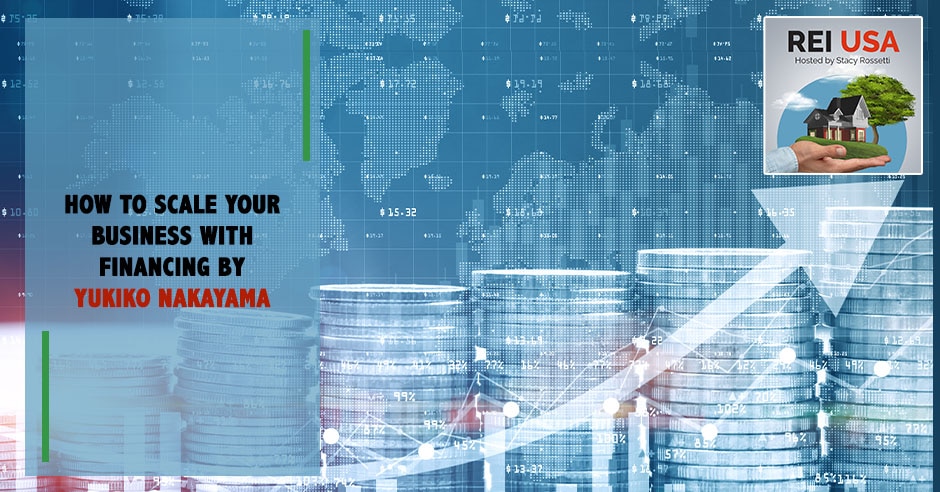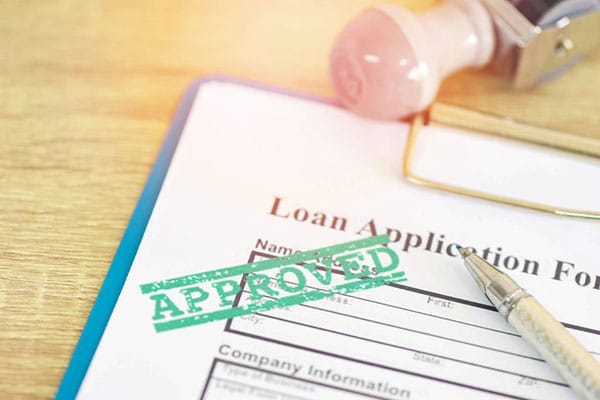
Financing is a vital part of scaling your business and there are many ways to go about it. In this episode, Stacy Rossetti hands over the mic to Yukiko Nakayama to discuss these methods. Ms. Yukiko Nakayama is a real estate developer focusing on residential redevelopment for 14 years. She manages acquisitions, financial analysis, project management, marketing, and financing. She breaks down the different ways you can fund your deals and compares residential versus commercial loans and private money versus hard money lending. Stay tuned for great insights you will need to support the growth of your real estate business.
—
Watch the episode here
Listen to the podcast here
How To Scale Your Business With Financing By Yukiko Nakayama
Hi.
How are you?
Good. How are you?
Thank you so much for this opportunity to present.
Thank you for moving up. I appreciate it.
[bctt tweet=”If you can use a regular home loan, you should go ahead and use it.” username=””]
No problem.
Yukiko does small apartments. That’s what she teaches as well too. Yukiko is going to get into that and then she could tell you how she’s raising her money to do all her apartment buildings. Take it away.
My name is Yukiko Nakayama. I’m one of the REI teachers and I’m teaching small apartment building every second Tuesday at 7:00 PM Eastern time. I like to tell you about how I made the money to acquire a small apartment building. I’m based in Virginia and most of my projects are in Washington DC. I typically work on the project where the renovation is needed for either condo conversions or small apartment buildings. It will take 18 to 24 months.
Our financing is mostly commercial bank loans with some cash from private investors or some other way to fund equity. We are looking to invest more in a commercial project. Like Stacy, I’m looking for a self-storage facility. Our goal is to create wealth for our partners through real estate investments. I’m in business for years and I have a Masters in Real Estate Development as well.
A way to raise the fund is the first home equity line of credit. It’s called HELOC. If you have a house, which appreciates over time, you can be able to put a line of credit. This works like a credit card. The bank will give you based on the equity on the properties. You can get $100,000, $200,000 or $400,000. In our case, our house appreciates a lot so we are able to pull a $400,000 line of credit. For that, we will be able to fund a small gap on that. We have a project with primary. We bought on maybe 90% of constructions and the acquisition cost from hard money lenders. We then use the other 10% from this home line of credit.

Financing: A way to raise the fund is the first home equity line of credit. It’s called HELOC.
Initially, our project is much smaller. For example, the first house I purchased price was close to $200,000. The initial budget of the rehab was $10,000 or $50,000 for changing the carpet and countertops and maybe replacing a small bathroom. That’s about it. We’re able to make a $30,000 profit. For the first property, we used regular home loans. We’re lucky because the home condition was pretty decent. It’s just very old and not updated at all. We are able to use that regular home loans.
Most people were shocked that we use a regular home loan. In some cases, when you purchase the properties, when the market is good and then have the demand, you’ll be able to capture that premium between the regular old house and a house that’s renovated. When a renovated house is very sought-after and has a higher premium, you can buy homes that are very old and not attractive at regular home loans, be able to update in a very smart way and then capture premiums by walking through it.
In regular home loans, for people who may have purchased a home before, you go to any major bank and then qualify for the loan. In our case, this was investment loans. Make sure you say, “This is an investment loan.” Don’t try to claim this as your primary residence. That’s fraud. They quote a higher rate, maybe 50 basis points or 100 basis points, which equals a 1% higher. If your mortgage or regular loan is 4%, maybe they might give you a 4.5% or 5%.
Regardless of the loan, it’s much cheaper than hard money loans, which are typically 8% to 10% sssss. If you can use a regular home loan, you should go ahead and use it. The trick is sometimes you’re competing with other cash buyers and it’s difficult. Have a very good rapport with sellers. In my case, I have a wholesaler who gives me these deals. The wholesaler has a very good rapport with the sellers and the seller was okay, which takes a little bit longer than quick cash closing. That was our first purchase.
When I find the houses, it’s in their worst conditions. Sometimes the roofs are collapsing. There is so much damage to the house. With that type of loan, you cannot use the regular home loan. We use the hard money lenders. To be able to use hard money lenders, you need maybe 1 or 2 track records to start. If you’re starting, maybe you may have to talk to the private investors. In my case, for some reason, this hard money lender, the one house that I did was enough for him to give me a loan.
[bctt tweet=”For the real estate business, there is always a community bank or local bank that could give you a business line of credit once you establish some track record.” username=””]
We paid at the time a 12% interest rate and then a 2% point, meaning you have to pay up upfront 1% or 2% of that loan. It’s almost a premium to hard money lenders. Typically, hard money lenders are in-house but some of them sell your mortgage to the secondary market on Wall Street. The in-house hard money lender was more flexible for me to work with different types of lending. If you have some problems with finishing timeframes, they might give you 6 months or 12 months extensions maybe with a fee but if your hard money lender is selling in a secondary market like Wall Street, you may not be able to get that type of flexibility.
You might want to check with your hard money lenders to see if they’re selling your note to someone else. That’s good to know so that you may have some leeway or flexibility in your hard money loans. I won’t go into details about private investors. There are people who you think may not have money but unexpectedly, they do have money and are willing to loan you for your project. It’s best to tell everyone that you are working on this project and if you have a project or investment opportunity, say to people, “Would you like to know?” Some people say yes and then grab those opportunities to make much better money than they are making in stock or bank.
Keep telling what you’re doing and put what you’re doing on social media and stuff like that. It might be good but don’t state your investment opportunity on social media unless you are doing the 506(c) which is you can advertise in the media. You should know how to consider a business line of credit. These are some of the commercial banks that have a business line of credit. I don’t know about the Bank of America or something but for the real estate business, there is always a community bank or local bank that could give you a business line of credit once you establish some track record.
You go to see the bank, have some lunch with them, tell them your business plan and how you’re doing the project and they will give you a line of credit. One of the lines of credits that I got was based on the track record and then also we’ve put some collateral. With that, we’ll be able to get another $400,000 line of credit so that we can further get bigger a project. Sometimes we purchase a property close to $500,000 and then also a construction project is more than $500,000.
These are the times that you consider that mix-up and then have a business line of credit so they’ll give you more flexibility to do the type of project you want to do. With a bigger project, you can also get a commercial loan but a commercial loan is a 75% loan-to-value or could be a loan-to-cost. You need to get those differences. When you have a $1 million project, you have to be able to come up with about $300,000 or $400,000. If you have those lines of credit, you have to be able to make that leap.

Financing: You might want to check with your hard money lenders to see if they’re selling your note to someone else. That’s good to know, so that you may have some leeway or flexibility in your hard money loans.
For this type of syndication, I don’t dance as a GP but I’m involved as a limited partner. Syndication is very good for a commercial project. It will give you the flexibility to be able to take on the bigger deals but then you have to have some certification to know SEC regulations and then be able to articulate the business plans. If you’re a GP or General Partner, you have to be the one to execute the long-term business plans for 5 or 7 years. Some people do part-time but I don’t think this is something you can pull off if you are not a full-time real estate person.
The next fund is what Stacy is doing. If we have a mini project and it is coming to the point that you need to raise funds almost every month or every couple of weeks, it’s time to probably move up to the fund. Also, you can diversify and give the investors a stable return. Instead of one project that has high returns, maybe 3X or 4X but for the other projects, you give them poorly. Instead of giving these up and down, a private investor likes to have a more stable return. If you create a fund, there’s a benefit to the private investors.
If you don’t want to do syndication or fund, there is another structure. You can create a joint venture. I’m not a lawyer so please ask a lawyer about the details of a joint venture. If you can come up with someone who has a lot of the money but doesn’t have the time and want to be very hands-on, then you can partner with this person. This person has to be very involved in a project. Otherwise, it will be an invalid joint venture structure. He or she must be involved in some parts of the business execution like putting down some part of the EMD, evaluating a project, going to the sites or something like that. Work with 2 to 3 business partners and it might work very well.
Last is the self-directed IRA. Some people have a retirement account that can create the tax-deferred or tax-saving through this fund. I want to highlight HELOC. In most of the major banks, it’s easy to get a fairly low interest but not amortizing. It means that your balance will not go down. You should consider a short-term project. Don’t use this when you’re trying to buy in 10 or 20 years because it’s not amortizing. If you borrow $100,000, you still have a $100,000 balance in 10 years. These are for a short-term project, a flip or something like that. At the end of the project, you should pay off all that line of credit. Otherwise, you will get in trouble in the end.
In regular investment residential loans, unlike HELOC, the bank cannot put out the loans. In HELOC, at any time the bank will feel iffy about any situations, inflations or COVID, they can pull this out. Even if I have $400,000 and the bank said, “No, I don’t want to do that,” they can take it out. They decided not to do the HELOC anymore. I paid off the loans but they’ve pulled up the business. You should be aware that if you are not using the HELOC, depending on the situation, it can be pulled.
[bctt tweet=”The economy affects very differently by state.” username=””]
In investment residential loans, have a high down payment and make sense to their bank. You think this makes sense but the bank probably pulled the appraiser or comps and if it doesn’t make sense to the bank, you cannot get a loan. For hard money loans, this is may be hard for a new person to approach hard money lenders but you should meet hard money lenders and then talk to them often about how you’re doing, how you find deals and you’re making progress. Eventually, the hard money lender will back this up as long as you are executing and progressing.
The pro of hard money loans is they’re very easy to find. They always sponsor or they have people there. The con is they have a high-interest rate. Depending on how they’re selling the loan or any house, it may not be flexible to extend the loan. I’m going to skip private money because many people already talked about private money.
With a business line of credit, most commercial banks offer to do the business. You should be talking to those bankers who have a branch in your area. Talk to them about the business and meet with them for lunch. Those people are mostly in the commercial real estate-related event. They may not appear in a later year event but if you go to some commercial real estate event, they’re there. You should network at those events or ask around to see if you have a commercial banker in your area.
It’s the same thing with the commercial lender LVT 75%. The difference between residential and commercial loans is it takes much longer and more paperwork. You have to create your financial statement, which takes a long time for me. Maybe not for some people. It’s 2 to 3 pages. You have to create all that with your asset, business entity and variations and then put them in a sheet. It’s your total asset minus your total liability and then your net asset. You have to do that every time. You also have to submit all tax records for your personal and business.
Most likely if you have a rental, you have to have each entity so you have to have all the tax returns for each entity and then submit them. The cost of the long process is also much higher. For example, the appraiser can cost $3,000 or $4,000 for 1 building. It’s much more expensive and longer but you are borrowing $1 million, $2 million or $3 million. That’s the cost you have to pay.

Financing: If you can come up with someone who has a lot of the money, but doesn’t have the time and want to be very hands-on, then you can partner with this person.
If it’s regular residential loans, you can get the 30 years terms. Most of the commercial loans are 5, 7 or maybe 10-year terms but usually, they got 25 years o amortization. The payment is not high but every 5 or 7 years, you have to renew. That means if the interest is going up in this environment, you have a refi risk, depending on how much equity is in your building. You may be able to refi. That’s a huge problem. The length is coming in and everything is good but you have a refi risk.
When you’re doing commercial loans, you need to figure out, “What am I doing? What can you do?” If the interest is coming up, maybe you try to refi earlier even if you pay the penalty fee. Those are the things that you have to do for commercial loans. Syndications for the regular person who started is a high-value curve. If you’re the person who can learn in a very short time, go to seminars or bootcamp and then do the syndication, go ahead. If you’re a regular person who cannot do this right away, start educating. Go to some seminars, bootcamp or podcasts.
Build up. Maybe start as an LP, lending $50,000 to someone and then down from that. It is something that you need to get educated on. The pro is you can take on the bigger project and that’s the way to go for bigger commercial projects. Part of a commercial bank, you can’t personal guarantee on the loan, which is a big plus. When you’re borrowing $3 million or $4 million, I don’t think you want to do the personal guarantee unless you have $100 million or you’re a billionaire.
To be able to get a loan without a personal guarantee is a plus. You don’t have to join the syndication but most likely, you are probably doing syndications. When you are doing much bigger projects, you don’t have to do a personal guarantee. For most of the small projects that I’m doing like a small apartment building, most likely, you have to sign personally on that to guarantee a loan.
I don’t do the fund but I’ll open-ended and then close the fund. If it’s open-ended, like evergreen, it’s continuous but the close fund has a specific period if you sign up. After the period, no one can come into the fund anymore. You can diversify the investment. Instead of investing in self-storage, you’re investing in maybe ten different self-storage, which might be located in a different state. If you are located in a different state, the economy affects very different by state.
[bctt tweet=”The key network is with mortgage brokers. They are your partners. ” username=””]
Usually, DC is recession-resistant because the federal government is here. If you invest in the fund, you can diversify the investment. If you’re the one who is doing the fund, you can stabilize and diversify returns for the private investors. The con is this is difficult to raise if you don’t have a track record. I do not recommend this to someone who’s starting.
In a joint venture, this is very tricky. If you have partners, it’s like marriage. It’s very difficult to break up. Even if you have very good lawyers and then they got the paperwork, people sue people any time for any reason. You cannot treat this lightly. If you’re doing the joint venture, I highly recommend getting to know the person you are doing the joint venture with. Make sure that the loan that you each have must get paid. This might be simpler and cheaper than syndication but talk to that lawyer who specialized in this.
For a self-directed IRA account, you need to set up with those providers who specialize in this. Some transactions are prohibited. If you’re related to the person who’s doing the transactions, you cannot invest. The pros, you don’t have to qualify for the loan because that’s already in your account. The con is that’s the money you already made. It’s your money like if you have $100,000 in your account. You’re not leveraging anything. It’s only that you have a good tax advantage.
FYI, if you have a self-directed IRA and the project is leverage, meaning the project has a bank loan, you have to pay tax on the money. I find out about that after I invested in syndication from my self-directed IRA. To avoid that UBIT, if you have a job or a business like I do, you can create a what’s called Solo 401(k). That’s what I did. I moved my money to a Solo 401(k). If you do the move, from investing in syndication from Solo 401(k), you can have a UBIT. I am an accountant. I’m not qualified to give you advice. Please check with your accountant when you are thinking about a self-directed IRA.
From the investor’s point, there are a lot of people who quit their job and move to 401(k) to be able to do that self-directed IRA conversion. Those are the people that you might want to target as a private investor. For yourselves, educate which transactions I’m going to do. If you are doing a self-directed IRA, you can purchase a single-family home and do the innovations. You can do wholesale inside the self-directed IRA which people don’t talk about.

Financing: To be able to get a loan without a personal guarantee, that’s a plus.
For example, I did a $50,000 wholesale transaction inside the self-directed IRA. If I want to do the wholesaling in regular business, then I have to pay $50,000 to the IRS but since I did it on the self-directed IRA, it’s already in the account. You don’t have to pay tax until you start to withdraw. Those are the things that you should run to. Talk to different self-directed IRA account providers and then get educated.
For takeaways, start where you are like a saving. Maybe make extra payments on the mortgage so that one day, you can pull the HELOC. When my husband and I started buying our primary business, we started paying a lot extra every month so that we can pay off earlier than 20 or 30 years. We ended up paying it off in 10 or 15 years. It makes sense but if you are trying to use a HELOC, make extra payments to the mortgage so that it’s paid off earlier and then build up more equity. You don’t want to know this quick story but once you got the HELOC, you can use it every single time for rehab. It’s worth mentioning.
If you need extra money to be able to pay the mortgage, you can get a license as an agent. If you get your license, you can start lending. If you are a student, you can find a student mentor for your fellow students or something like that. Find an investor who is looking to buy in your area and then tip-off, “This is the people who want to sell,” and then get the fee. You don’t have to get so much education to start. Wholesale and then flip. Maybe you can do some side hustle to be able to make extra money that way.
The key network is with mortgage brokers. They are your partners. I have one mortgage broker who navigates a lot. I didn’t know about the commercial bank loan or anything but he did a built-in one-year extension, which I didn’t know. I was panicking at the end of that one year like, “It’s one year. I couldn’t finish the construction. What do I do?” He casually said, “I built in the one-year extension. Don’t worry.” I’m like, “I’m glad you know what you’re doing.” I was able to finish my construction for a year. Use mortgage brokers if you don’t know anything. It is worth the money, even if you pay extra.
Look for a private investor, even if you don’t have a project or anything. Don’t look for them at the last minute. Keep track of all your deals and finance. Take pictures. I’m mentioning this because I wasn’t good at keeping track and then with pictures and everything. It’s best to organize so that whenever it’s time, you can show your track record of deals, pictures and everything so it’s all ready. That’s all I have.
Important Links
- Yukiko Nakayama – LinkedIn
- www.REI-USA.com
About Yukiko Nakayama
 Yukiko lives in New York and invests in New York
Yukiko lives in New York and invests in New York
